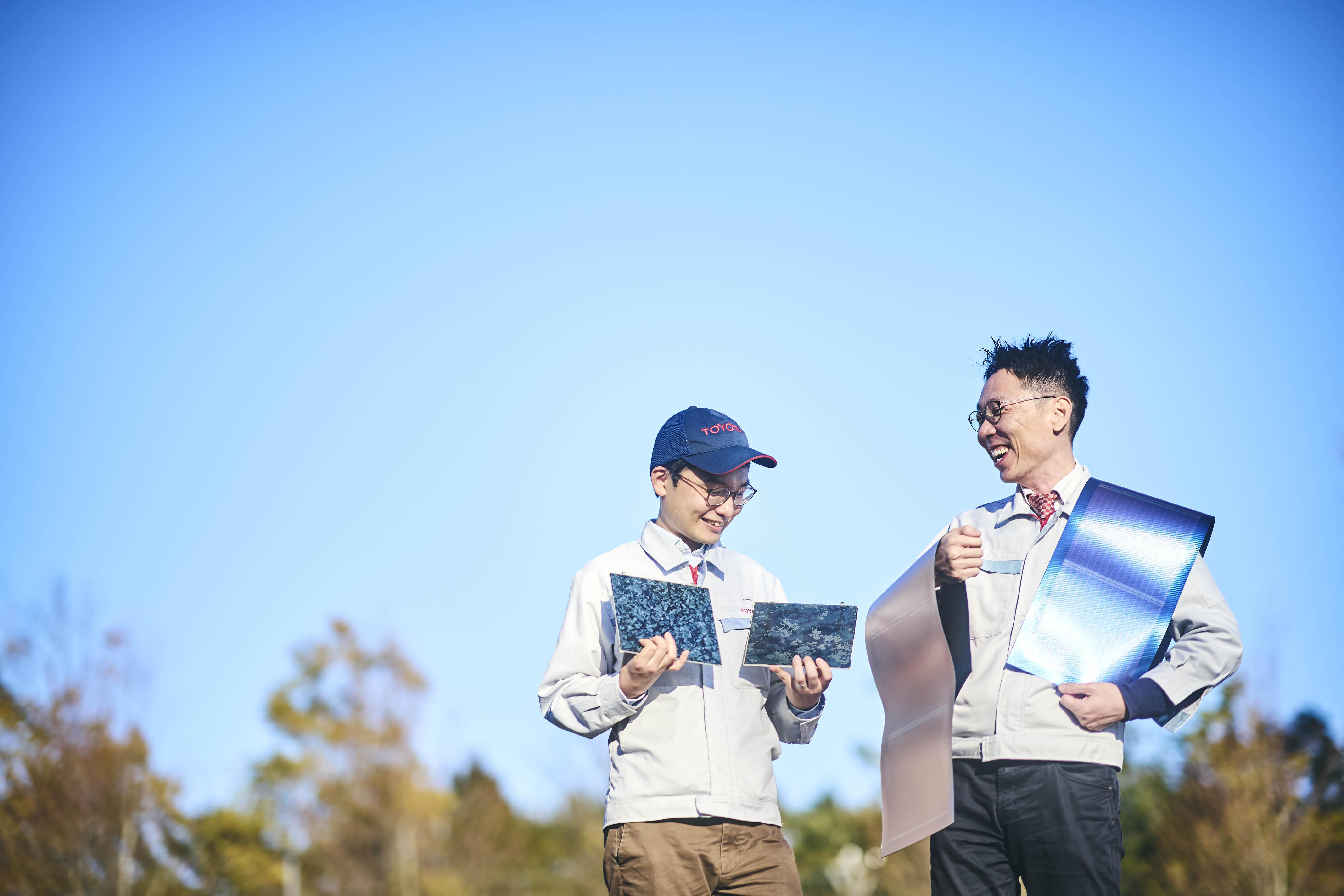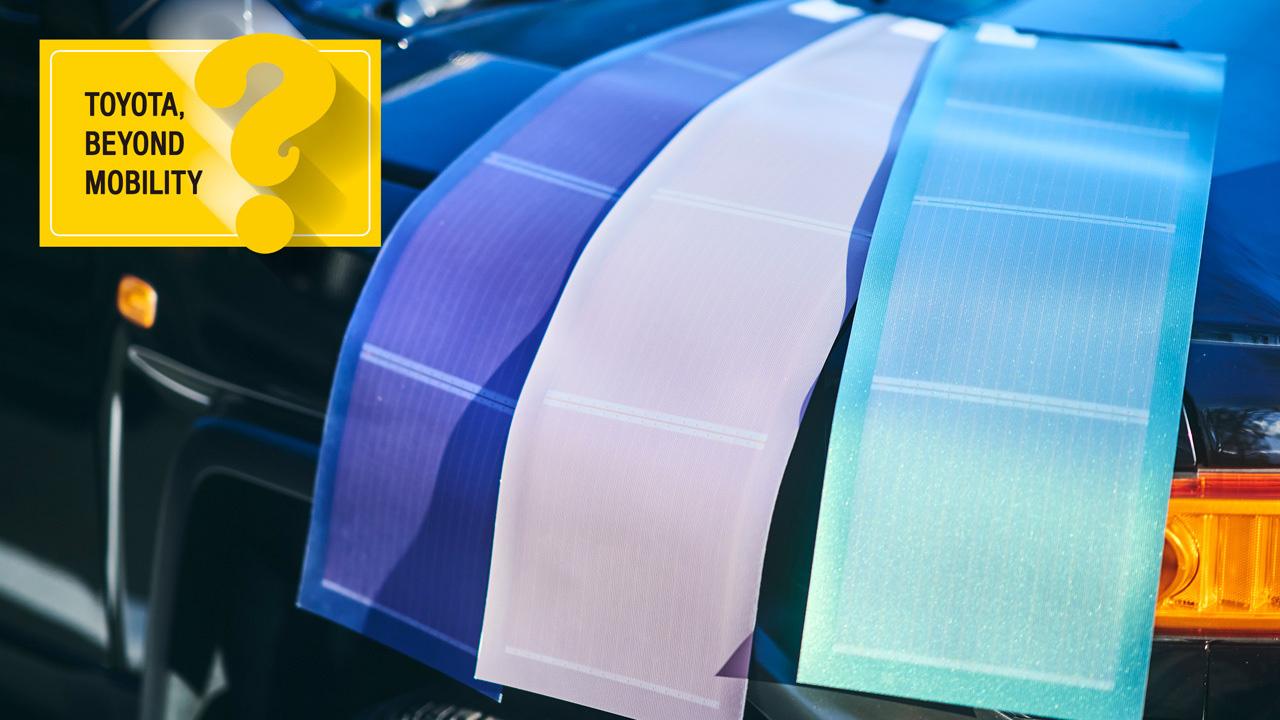
This series introduces Toyota's research in non-automotive fields. This time, we offer a look at shape-shifting solar cells.
Private power generators on wheels?
What specific benefits could this technology bring if widely adopted? Masuda explained.
Masuda
Since they can generate electricity on location without the need for transmission, power outages could be eliminated.
Even in the event of an earthquake, equipment such as security sensors and monitoring systems could continue to function without interruption, offering greater safety and peace of mind. Alongside the push towards carbon neutrality, we believe that widespread adoption would be invaluable at a time when major power outages and other disasters are increasing.
What about the possibility of attaching panels to car bodies?
Masuda
It is physically possible, and we have already begun trials. The biggest hurdle is the difficulty of fabricating solar panels to precisely fit the unevenness of car surfaces.
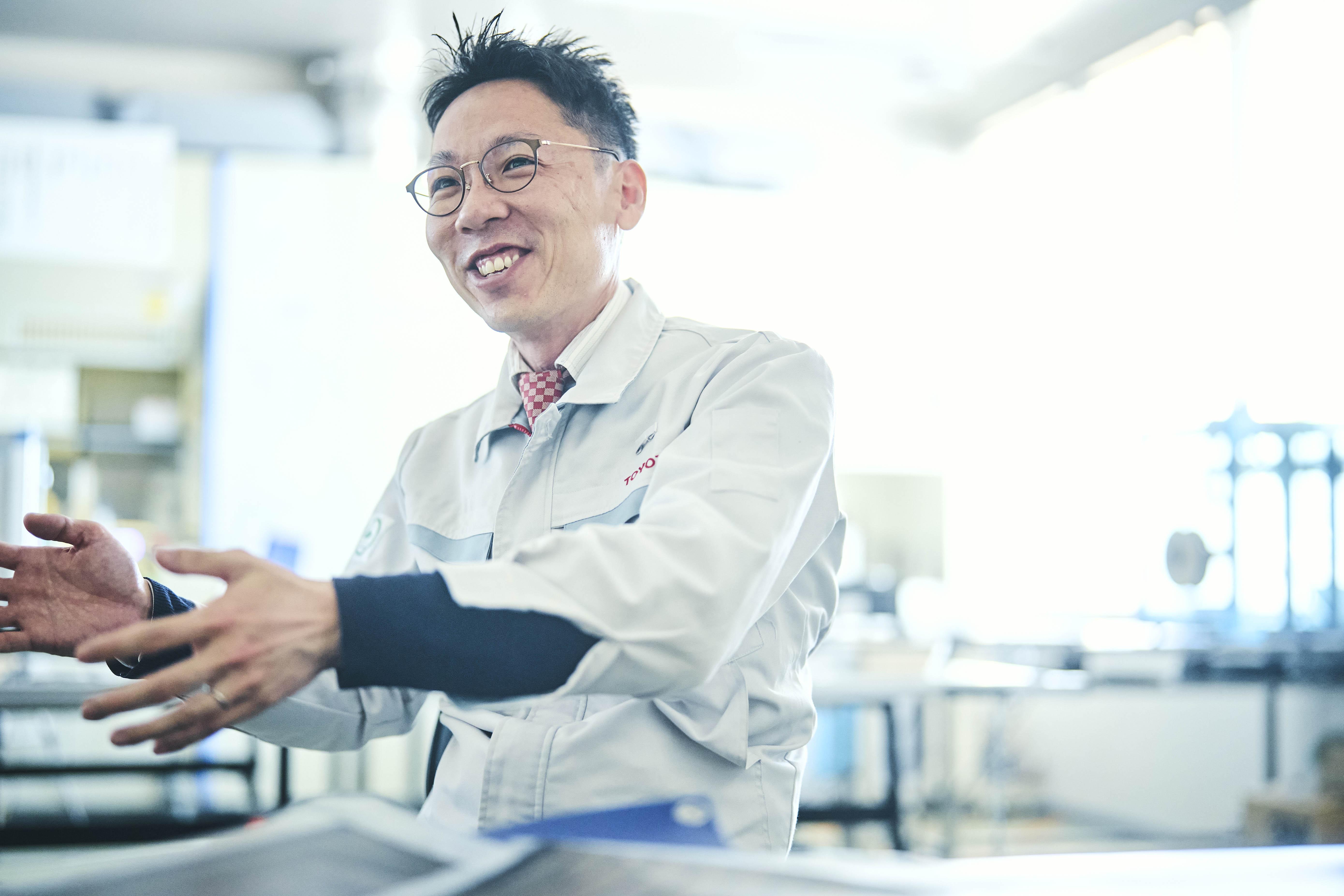
In addition, boosting the color of the decorative film impacts generating efficiency, so we face a tradeoff between the aesthetic aspect and the amount of power that can be produced. Bridging that gap is the key to our research and development moving forward.
This technology has already been published in academic papers. The game-changing invention is also gaining interest from sporting goods manufacturers, advertising companies, and companies involved in urban development branding.
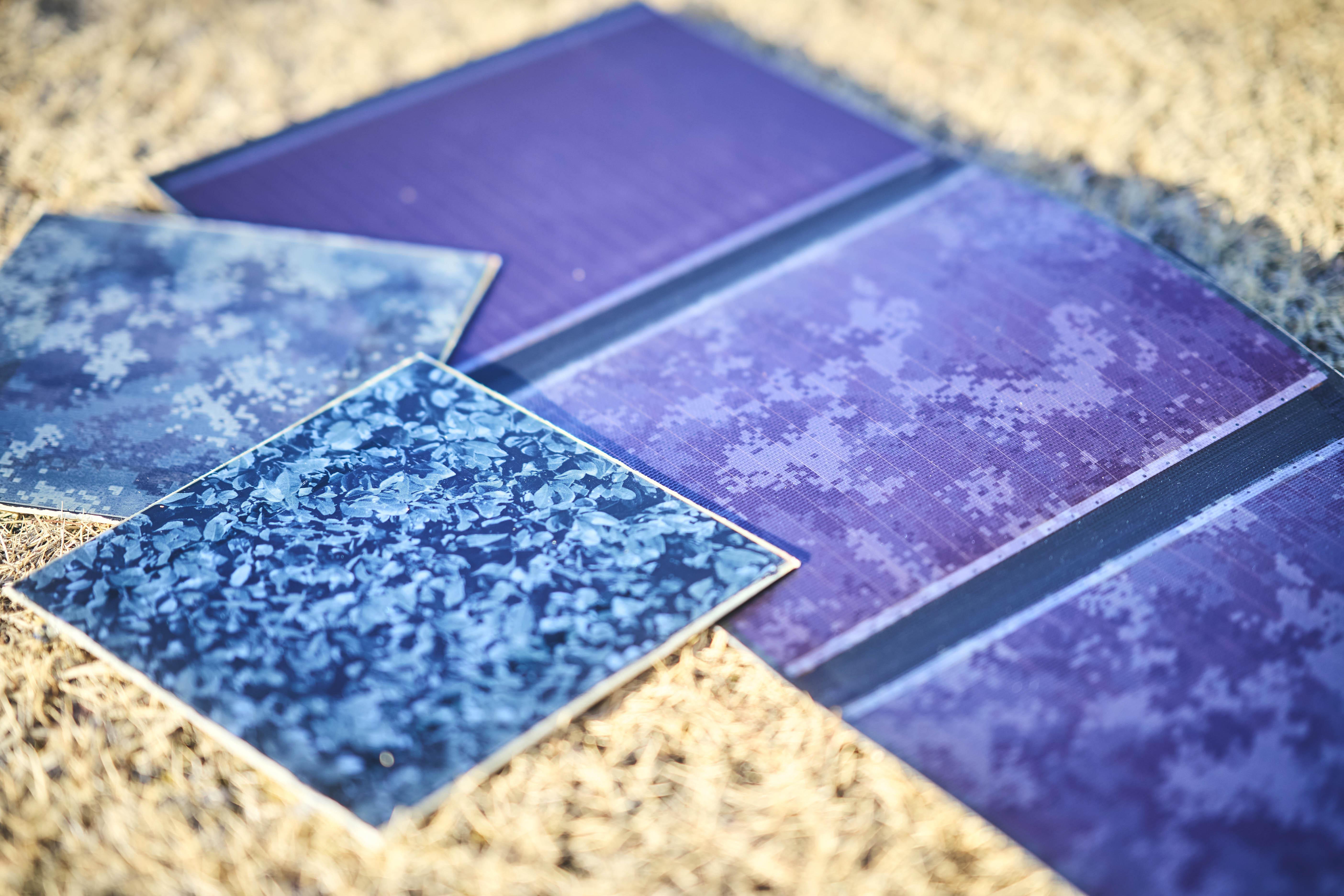
Needs arise in all manner of places, from scenic districts to shrines and temples, billboards, and the walls of high-rise buildings. What’s more, these panels are also drawing attention from some unexpected quarters.
One is for use in fan-equipped clothing worn by those working under the blazing sun. Since such conditions are ideal for solar power generation, the fans could be run at high output without concern for battery life.
The technology could also be employed in other kinds of clothing and bags, including hiking gear, and is also being adapted for zero-energy homes. Despite the vast potential of this research, Masuda tells of initially facing “tremendous headwinds.”
Tremendous headwinds
At first, researching solar power at a carmaker like Toyota was a plainly heretical act.
At a time when the concept of carbon neutrality had not yet taken root, the project certainly was not a priority for the company. For Masuda and his team, patience was key.
Masuda
Without knowing when the plug might be pulled on our research, we pushed on with a small team because we believed the technology was important for achieving a carbon-neutral society.
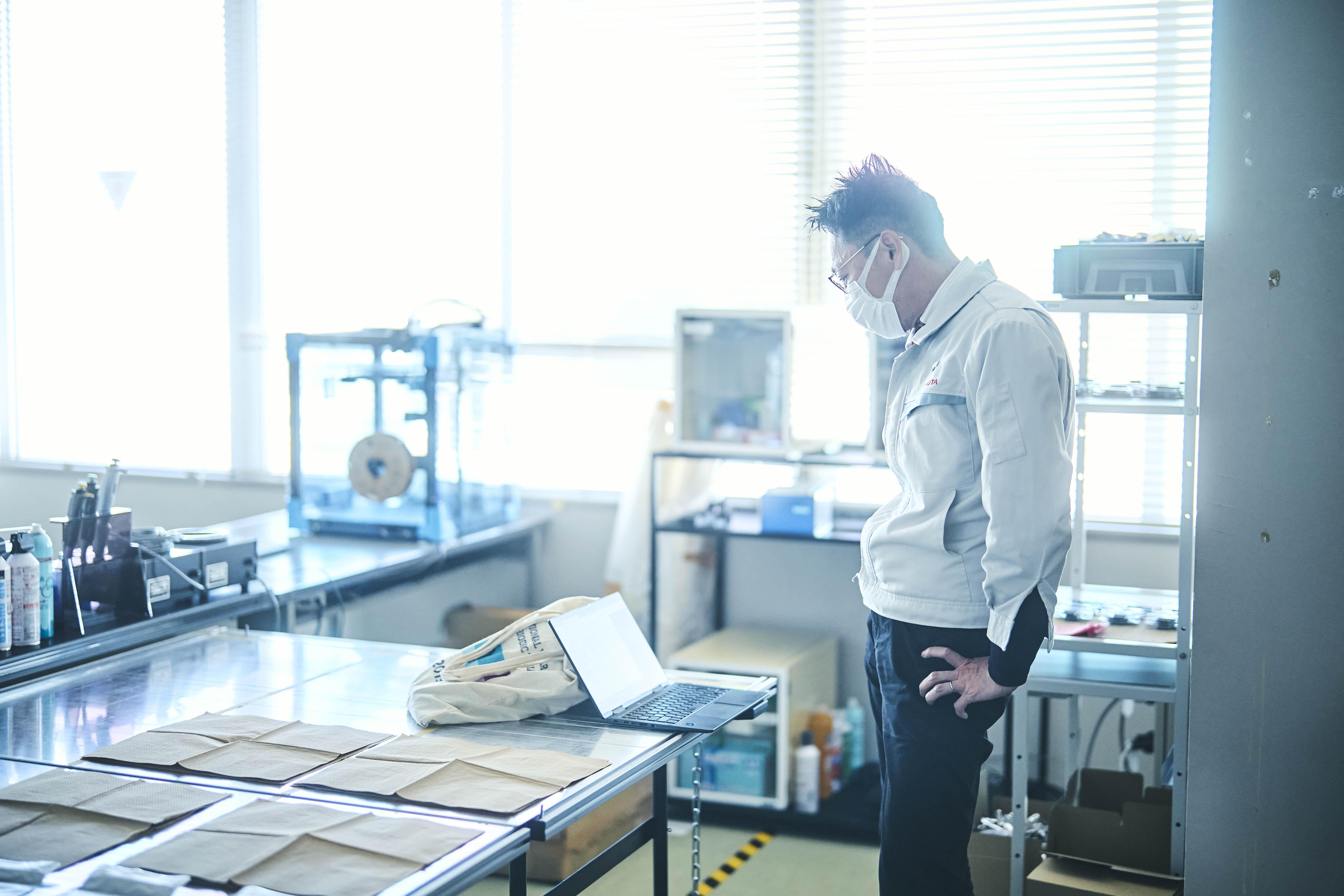
When momentum finally started to build towards carbon neutrality and the importance of solar panels was recognized, the wind shifted in our direction. More and more people, both within the company and beyond, began to support us. Having been overlooked in the past, I am really thrilled about the interest that everyone is showing now.
Masuda says that the words of Chairman Toyoda (then president) motivated him to continue the research.
Masuda
Hearing the president say that we needed to “step up to the plate” was a great encouragement. For those of us working far from the spotlight, it felt like permission to take the field.
Other members within Toyota also helped push Masuda in the right direction. Among them was a junior researcher who had joined the company with great ambitions of solving environmental problems and watched as Masuda struggled alone.
Ryota Tomizawa, Carbon Neutral Development Div.
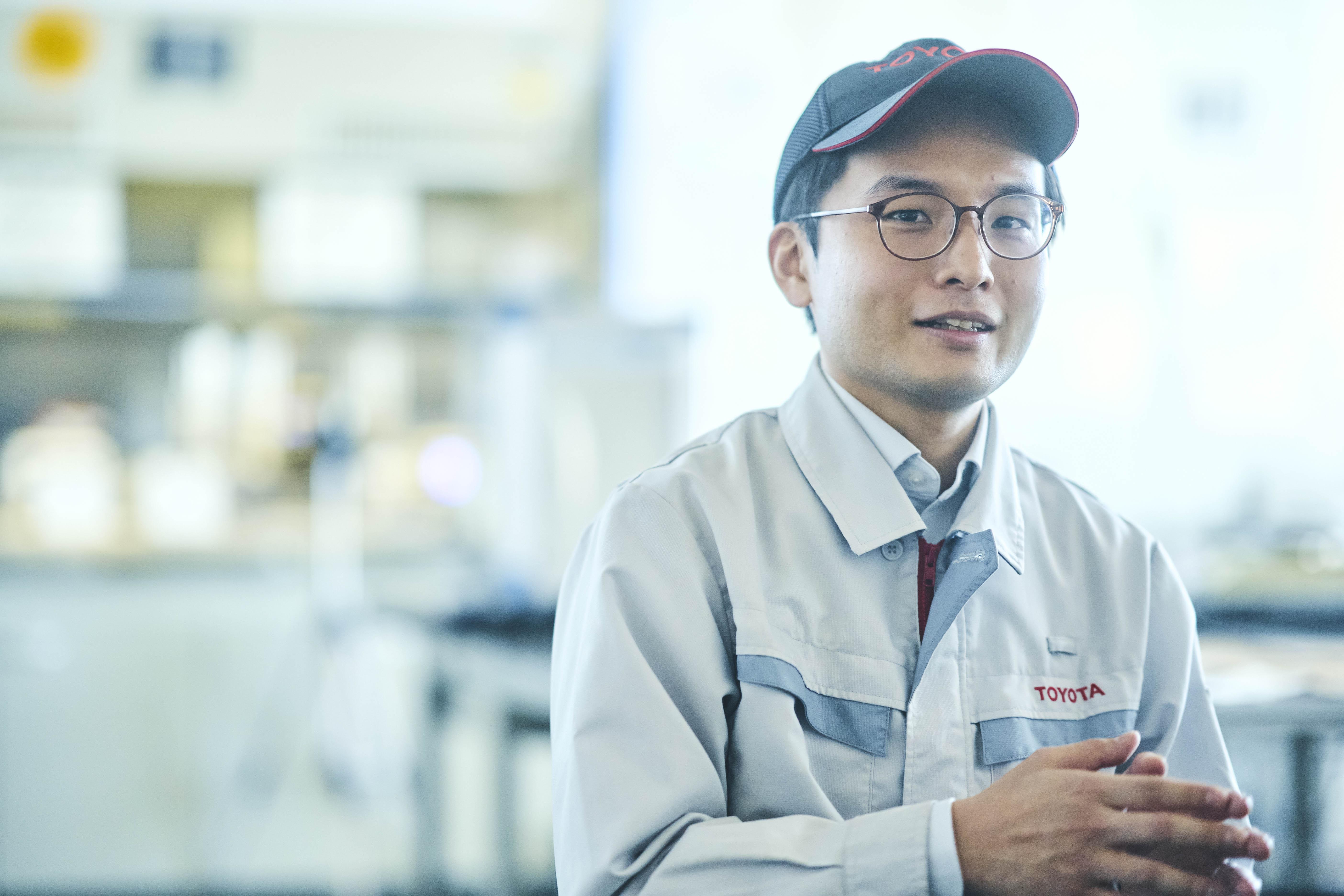
Despite running into headwinds within the company, I worked to follow in Masuda’s footsteps (laughs). I want to do whatever I can to bring this technology out into the world.
Carbon neutrality tends to be seen as quotas that must be reached, but for me, this development is about the positive aspects of contributing to people’s happiness with solar panels that bring color to our cities.
Masuda was able to turn headwinds around not by moving with the changing times, but by continuing to act with purposeful passion.
Many hurdles still stand ahead, not least working with mass-produced bases to reduce costs. Yet the passion of Toyota’s researchers continues to drive the development of carbon-neutral solutions that only a carmaker can deliver.
